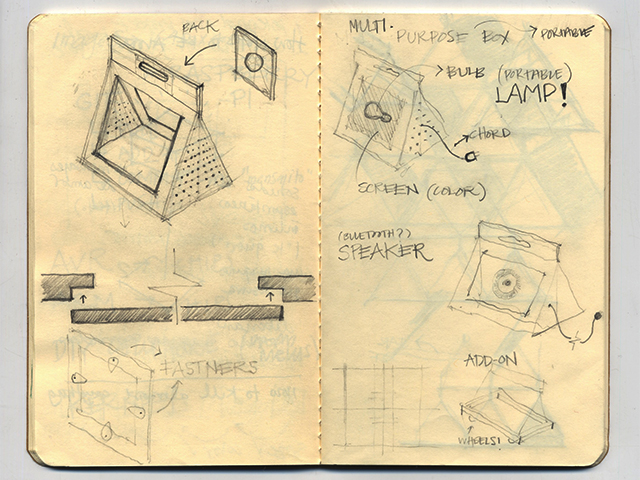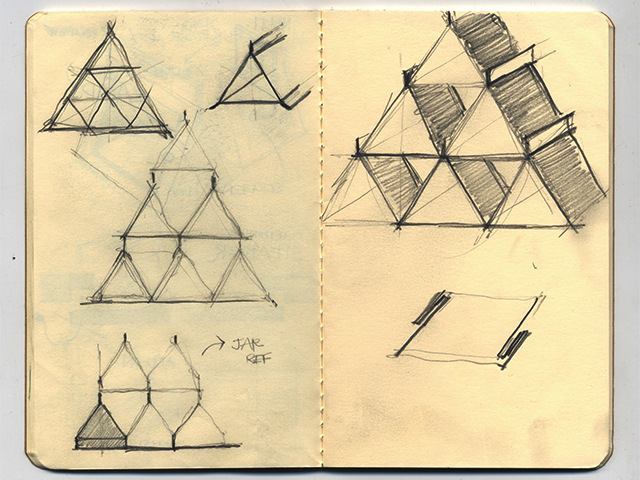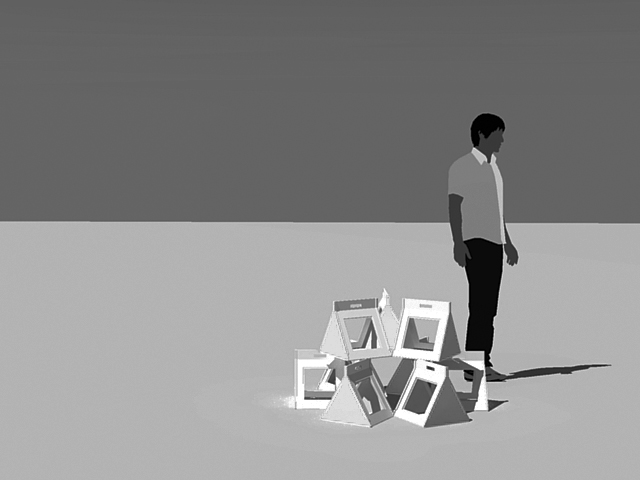Introduction
During the second week we learnt about computer-aided design.
In terms of software, I have installed and used the following:
For raster imaging editing, I have installed and used Adobe Photoshop, GIMP (free and open-source) and GraphicsMagick which is more useful for batch-processing image files, such as resizing a whole directory of images to a specific width.
To work with vectors, I have installed and used Adobe Illustrator and Inkscape (free and open-source).
To model and render 3d files I have installed and used SketchUp, Fusion 360 (free license for up to 3 years for Fab Academy students) and Antimony (free and open-source).
Assignment
The assignment this week was to model with some of the tools we have learnt to use a possible final project and to post it here! Since I was already familiar with Sketchup, that was what I started with, but before I sketched a little bit in my notebook.

These are the drawings I came up with so far. The cool thing is that now I think that this container that I now label as a "multi-purpose box" will be able to support other future projects such as speakers, lamps, shelving systems, etc. So I need them to stack. In the case of my self-playing percussion instrument this is important so that I can have a set of sounds that could play together. But I figured this could be also cool to set as a modular shelving thing inside a house or an apartment. I did these sketches on the patterns that could generate through a triangular mesh:

So with that in mind, I modelled my sketches using SketchUp. I considered changing units from the metric system to using inches and feet, just to start becoming more familiar with them. I like that you can work with them using fractions, I like fractions :). This is my SketchUp drawing:
Also, as you can notice, the image above still has a vector appeareance. This is because SketchUp has a PDF export option (File>Export>2D Graphic>/Select PDF from drop-down menu). Then, what I did is I created a new Inkscape document with my standard image size 640x480px, and into that document I imported the PDF created with SketchUp. I finally set some colors up, scaled the image and saved it as an SVG file perfectly compatible with web browsers!
I also wanted to test the possibility of one piece matching to others so that they could be stacked on top of eachb other:
Finally, I tried another version of stacking them and I thought I could try and render this image. I found Kerkythea which is for free and has versions for Windows, Mac and Linux. It also has a plug-in designed to work with SketchUp which allows you to export the model easily in order to open it afterwards with the rendering engine. I have had not enough time to check on possibilities beyond a simple light simulation such as materials and other features, that's why I only pulled off a simple render to see the new version of multi-purpose boxes stacking and some human scale. This is the image:

I tried using Fusion 360 and Antimony to model exactly what I had done using SketchUp, but it started taking me too much time I preferred to invest in learning more about how to improve this website. I'm sure they will be useful in the future, I'm especially curious to learn more from Antimony when the right time comes.
The new software I had never used before and I'm sure I will use now more in the future are both GIMP and Inkscape. Especially Inkscape has a very good interface to work with and, although I would still prefer Adobe Illustrator, I'd still try to use Inkscape to produce my SVG files, I've read that Illustrator likes to embed a bunch of unnecessary metadata that makes files grow way bigger and that is not good for websites!